For far too long female spies in fiction were given the short shrift. Typecast as either a Mata Hari type seductress or a martyred Edith Cavell, they were crafted with little depth, beholden to the whims of men. From the earliest British invasion literature which aroused spy paranoia, to the works of William Le Queux and John Buchan on the eve of the First World War and during the heart of it, and onward through the spy novels of Ian Fleming and John Le Carré, women are predominantly cast as virtuous and ultimately inept, or cunning, duplicitous seductresses. They are valued merely for their bodies and what it provides the male protagonist—either a safe shelter, or erotic, and often times dangerous, titillation.
But a growing list of stellar period mysteries and thrillers are proving women can foil the most devious of plots and outwit the villains, with or without their male counterparts’ assistance, and do so with a style all their own. In this sense, historical espionage fiction is shedding light on the forgotten layers of our historical record, and correcting the inaccuracies and misconceptions about our past as they give voice to those who have been previously silenced, invisible, or ignored. Their contributions will no longer be relegated to the dusty footnotes of history.
A great deal of historical espionage fiction is set during the period between-the-wars simply because it is such fertile ground for danger and intrigue. Not only were the conflicts dire and far-reaching, but it can also be argued that the outbreak of the Great War in 1914 was the beginning of the modern era, evolving into the shape and face of the world we now inhabit. It is within the intelligence agencies of the world wars that we see many of the methods and structures we are so familiar with today begin to form and develop. While espionage was not invented in the 20th century, being employed in such places as Tudor England, Civil War America, and Napoleonic France, it did certainly come into its own, proving to be a necessity for all countries who wished to play a role on the world stage.

The Prisoner in the Castle by Susan Elia MacNeal
Maggie Hope has swiftly become the quintessential female spy of the WW2-era. A brilliant cryptographer, courageous secret agent, and incisive investigator—it seems there’s nothing Maggie cannot do. Each novel allows readers to delve into another aspect of WW2 spy-craft, and another intricate setting to be swept off into adventure.

A Sorrowful Sanctuary by Iona Whishaw
Whishaw’s series follows ex-intelligence officer Lane Winslow as she searches for a new start in British Columbia, Canada in 1946, but the war and its repercussions are never far from the characters’ minds. The setting is fresh and the cast endearing, and Lane’s spy skills turn out to be quite handy in solving murders. The author based Lane on her mother, who was a real spy during the Second World War, and her devotion to the facts show.
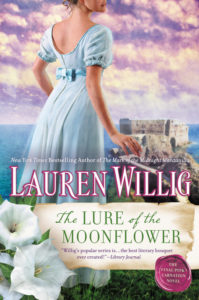
The Lure of the Moonflower by Lauren Willig
No list of fictional female spies would be complete without at least a mention of the delightful Pink Carnation Series. The series focuses on the dashing derring-do, and unexpected romances, of English spies in the vein of the Scarlet Pimpernel during the Napoleonic Wars. In particular, Jane Wooliston—the eponymous Pink Carnation—whose exploits are legendary, and who finally meets her match in the final installment of the series, which also happens to be my favorite.
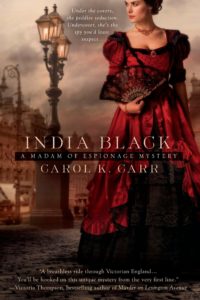
India Black by Carol K. Carr
Wickedly irreverent and uproariously bawdy, the India Black series takes the worn-out trope of the spy-whore and turns it on its head. Madam of her own brothel in Victorian London, India is unceremoniously blackmailed into assisting the War Office to recover the top-secret papers stolen from one of her clients, and so begins her unwilling career of espionage. Part madcap caper, part spy drama, and all fun. Through it all, India retains her sharp wit.
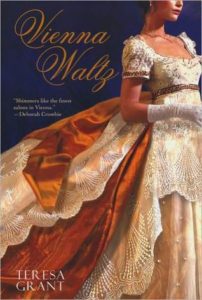
Vienna Waltz by Teresa Grant
The Malcolm and Suzanne Rannoch Series is one of the best examples of a married couple working in concert (and sometimes at odds) with each other, and if one of them proves to be cleverer than the other, it is Suzanne. The tangled web of deceit she weaves around herself as a covert French spy wed to a British intelligence agent whom she falls in love with is as engrossing to watch unravel as the murderers and acts of espionage they must foil. My favorite of the series, Vienna Waltz, is set during the Congress of Vienna, and a great introduction to the characters, and leads into Imperial Scandal, which takes place just before and during the Battle of Waterloo. Both highlight Suzanne’s high-stakes gamble.
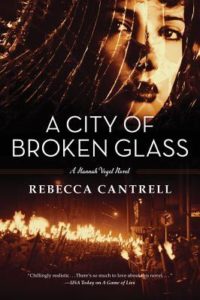
A City of Broken Glass by Rebecca Cantrell
Meticulously researched, and at times gut-wrenching in its accuracy, the Hannah Vogel series takes the reader inside the dangers of Nazi Germany during the build-up to WW2. Hannah, former SS officer Lars Lang, and the rest of the cast particularly shine in this fourth installment, set during the days before the terror of Kristallnacht. Audacious in its premise, and stellar in its execution, Hannah’s daring exploits are not to be missed.

Four Funerals and Maybe a Wedding by Rhys Bowen
Readers who have not yet picked up a book in Bowen’s Her Royal Spyness Series are missing out on just plain fun. While not strictly a spy, Lady Georgiana Rannoch still gets into trouble—and more that her fair share of danger—while undertaking missions for her royal family. Some of these capers hold potentially dire consequences, but Georgie steps up to save the day and unmask the villain, often with hilarious results. Cleverly plotted and dashingly executed, these books always guarantee readers a rip-roaring good time.
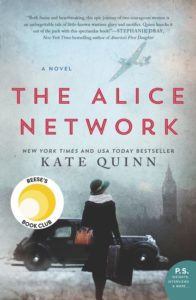
The Alice Network by Kate Quinn
Utilizing both fictional spies and actual agents who gathered intelligence for Britain inside German-occupied France, this novel offers a glimpse into the real dangers female operatives faced during the First World War. The fact that it features the brilliant Louise de Bettignies, a women whose spy network was the most thrillingly successful during the early part of the war, is worth the read alone, but this book also touches on so much more. Dark and gripping, the dual-timeline story explores the themes of courage, loyalty, truth, and ultimately redemption.

The Spymistress by Jennifer Chiaverini
In The Spymistress, the astonishing life and achievements of Elizabeth Van Lew are finally given the spotlight. Van Lew operated a far-reaching spy ring for the Union in Confederate-held Virginia during the American Civil War, gathering military intelligence from enemy officers, assisting in the underground railroad, and helping prisoners to escape. Clever and eye-opening, readers will devour this largely untold tale of a valiant woman.
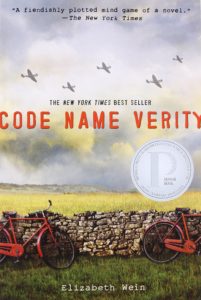
Code Name Verity by Elizabeth Wein
This book is a twisty, mind-game which explores the meaning of courage and friendship. The narrator is a secret agent who has crash-landed in Nazi Germany and is being held prisoner, interrogated for her captors. Except nothing is as straight-forward as it seems. This is a riveting tale with a nuanced portrayal of female operatives, highlighting their strengths and humanity.

















